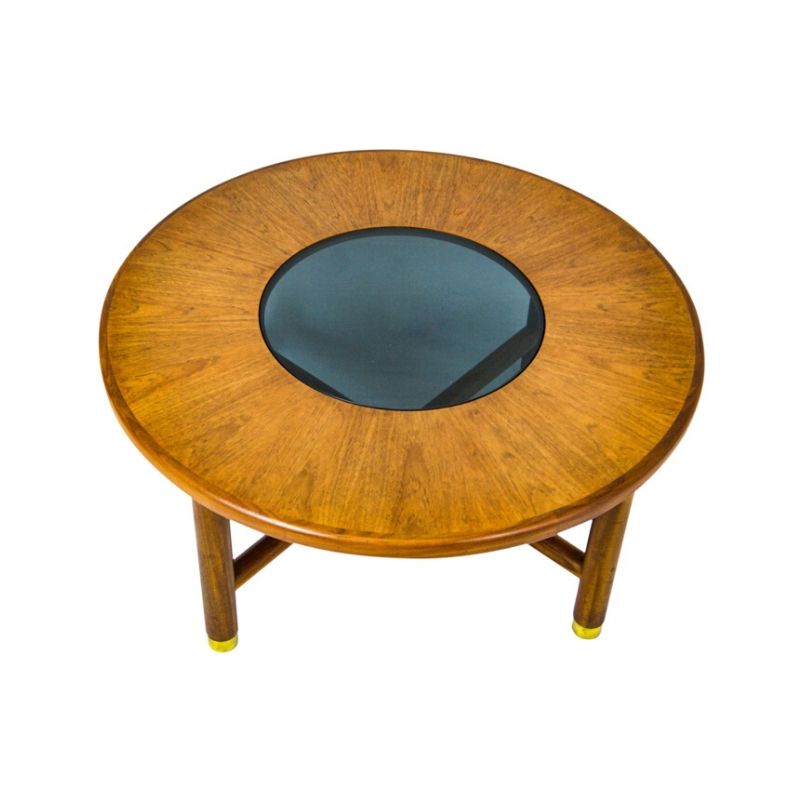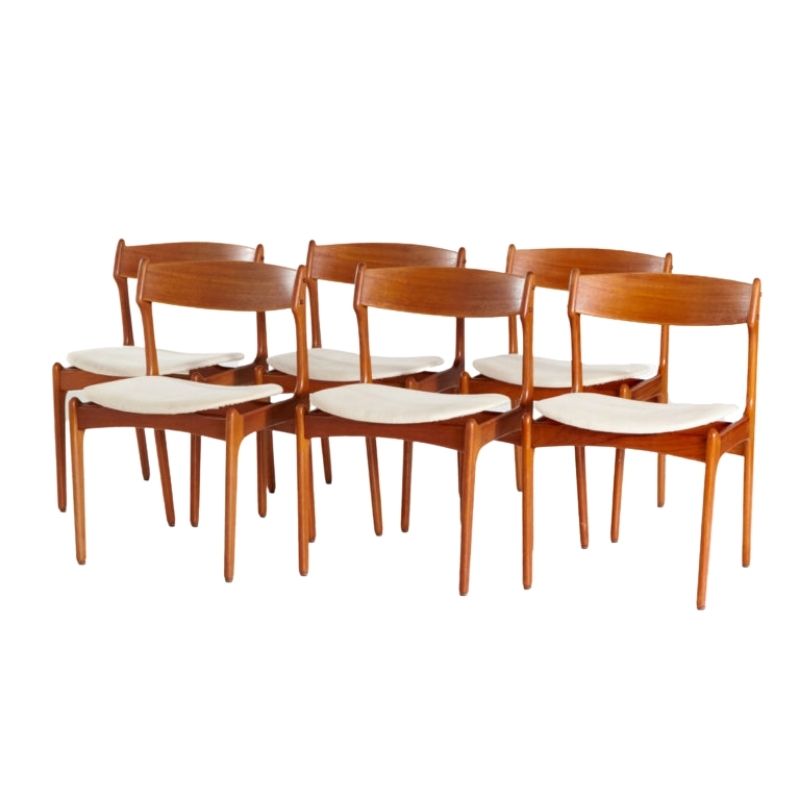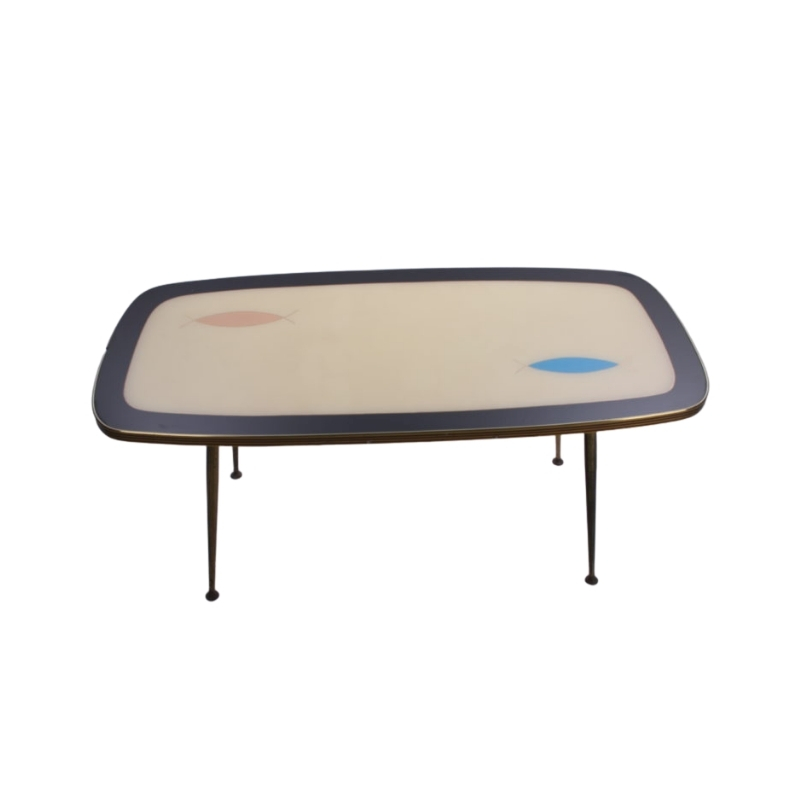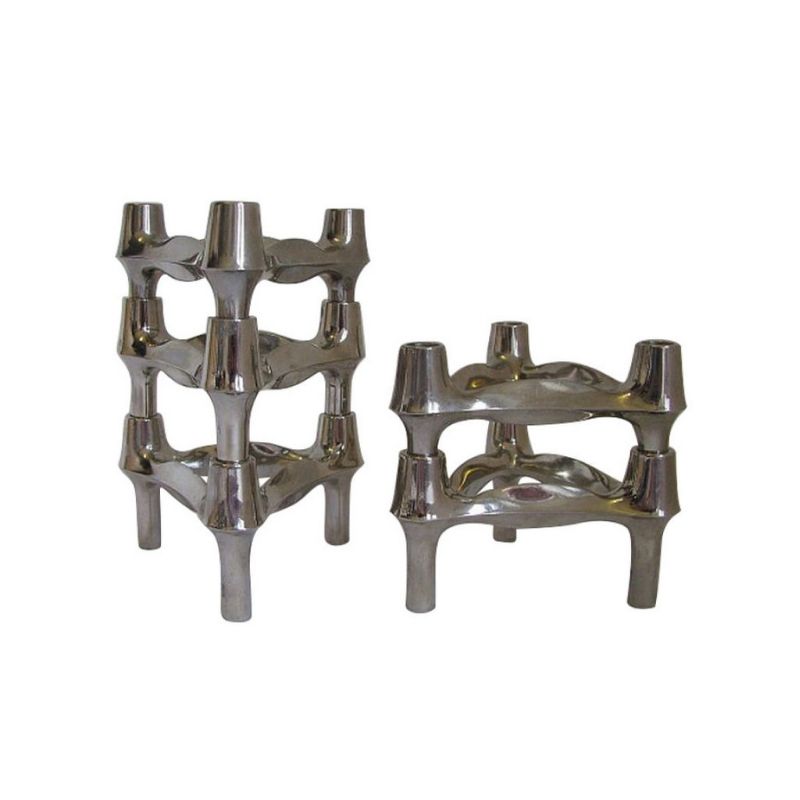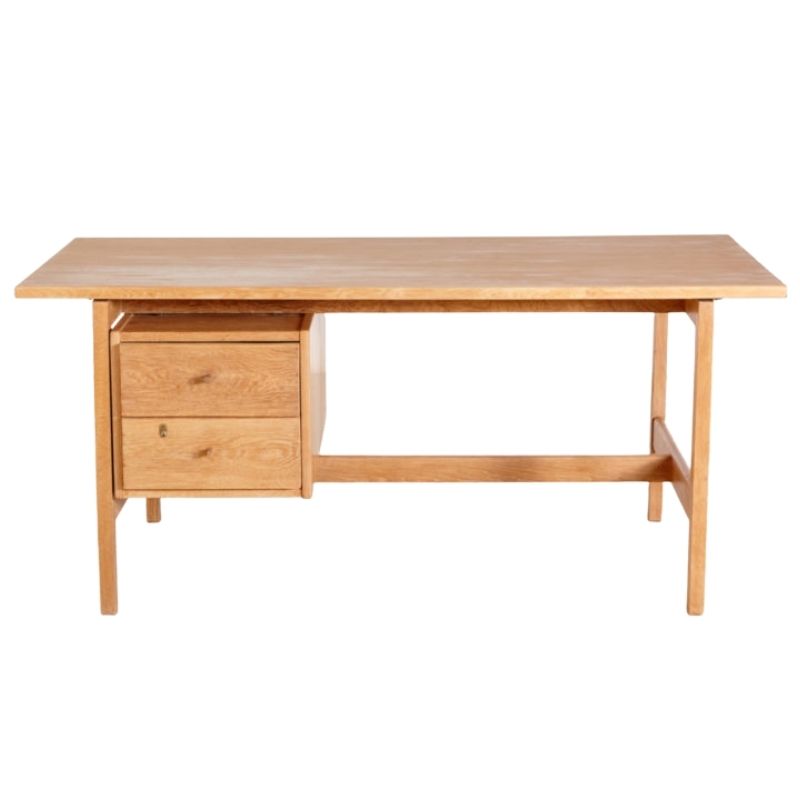Hi, I've been calling into the great echo-chamber that is the Internet all day....
I felt pretty sure that this was Finn Juhl for Niels Vodder, but apart from one measly Pinterest reference (not the most reliable source out there!) I can't find the positive ID I'd like.
Please enlighten me if you can - am I right? Can it be proved?
Sincere thanks 🙂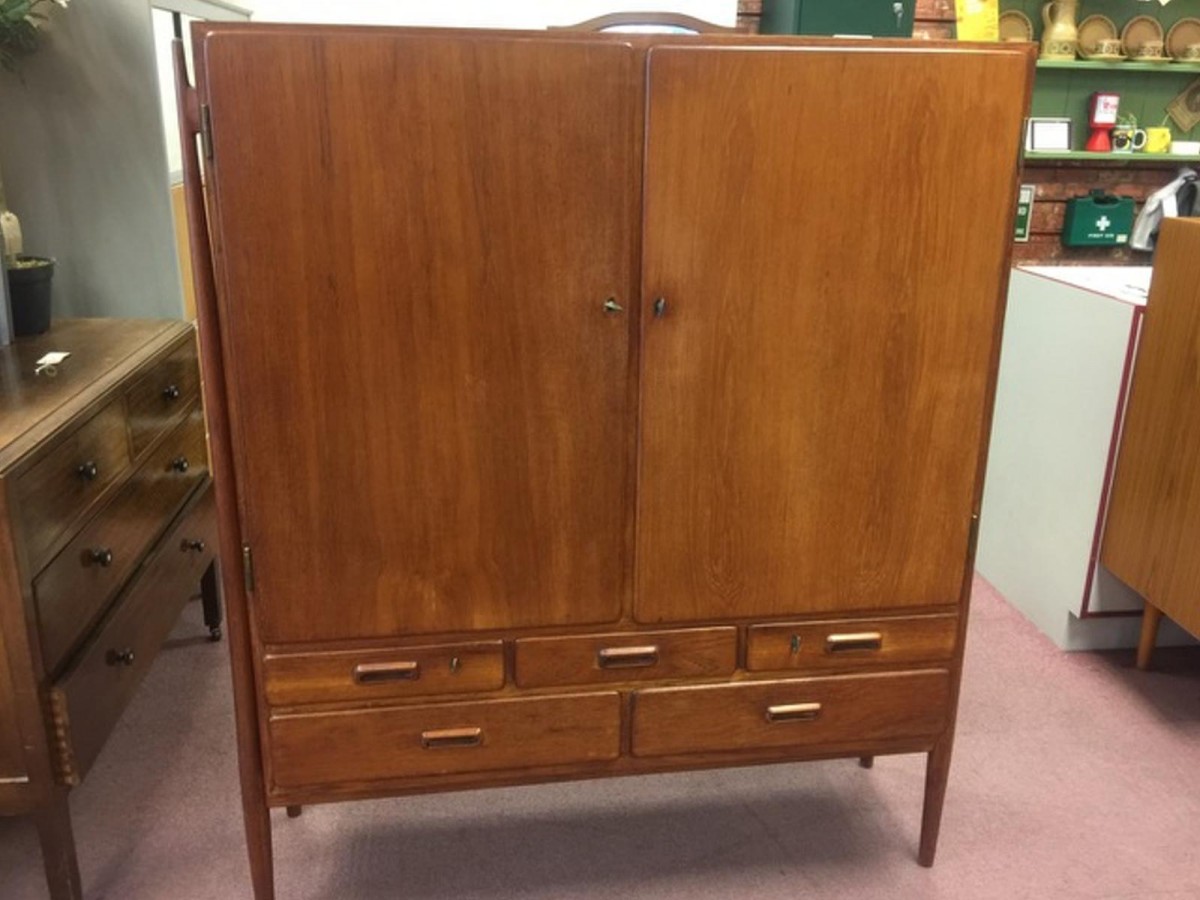
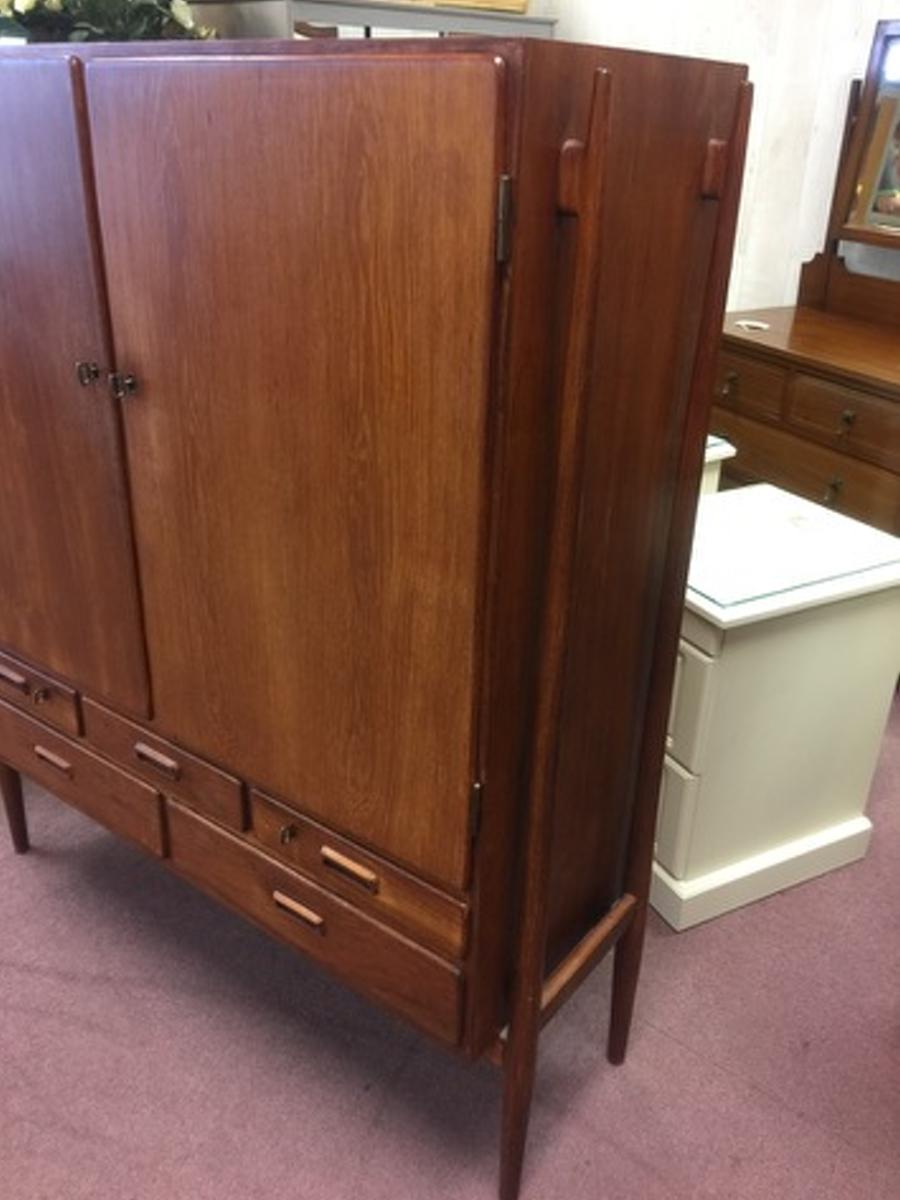
I can take more photos tomorrow, but essentially it's this piece which is referenced as FJ for NV. The quality is off the scale; it's amazing. All keys present and correct too.
https://www.google.co.uk/search?q=finn+juhl+niels+vodder+cabinet&client=...
I think there is a good chance it is Niels Vodder. However, the same cannot be said for Finn Juhl. I'll contnue searching but here are two other pieces attributed as such:
http://chickadee.jp/product/niels-vodder-cabinet/
http://www.artnet.com/artists/niels-vodder/cabinet-3sEfpXQtJ51L9cqAYUaj3Q2
Not marking on the backside of the front cross brace?
It is a Niels Vodder piece, but I do not believe it was designed by Finn Juhl. There is also a similar lower credenza (NV-54) which both utilize the same leg design and connections. Here is a vintage catalog reference to the credenza. I think I've seen the tall cabinet reference somewhere, but haven't yet found it after a quick search.
Very nice pickup.
For cabinetmakers, if there is no architect/designer credited for a particular design, then there is a strong likelihood that the cabinetmaker himself is the designer.
Snedker workshops were not like many of the middle to lower end factories, where there were uncredited in-house designers. In fact, a few of the top cabinetmakers of the era were a primary (sometimes the only) designer for what they built, including Frits Henningsen, Jacob Kjaer, and Peder Moos.
I still have not been able to find the catalog listing (I'll probably stumble across it in a year or so), but thought I might expand on my previous comments:
If my memory serves me correct, and your cabinet was designed by Niels Vodder (or another family member: P Vodder, or Knud Vodder), a strong assist should still go to Finn Juhl for the design style.
In 1949, FJ designed a similar tall cabinet, model #70, for the high-end factory, Soren Willadsen (who I think was the successor company to the cabinetmaker workshop, Knud Willadsen). This piece is listed in furniture index and was also part of Bruun-Rasmussen's big 100yrs Finn Juhl auction.
https://aleph-01.kb.dk/F/KANLSLRU2Q62DKXQ8N2LCY18TIUII62BYU4LL7LR3JU19MC...
In addition, FJ also designed a smaller cabinet with similar details (perhaps also in 1949 but I am currently unable to verify that date); this one being made by Niels Vodder. Drawings of this small cabinet are in the Finn Juhl Esbjorn book.
Therefore, it is easy to envision that NV already had a series of design motifs available to borrow in his design effort for his credenza and high cabinet. So while FJ may not have been the designer of these two pieces, his fingerprints are still all over them.
Once again, I'd like to repeat myself in saying very nice pickup. If it were me, that cabinet would stay with me to the grave. While you mentioned there were "less exciting" pieces that accompanied this cabinet, maybe you could post photos of those. They might be more exciting than initial assessment. . .
Thank you for your help, sincerely. Today I took more and better photos and grilled the person I bought it from. They had it for only about 10 years, having bought it from a 'junk shop'. Before this its history is unknown, except that at some point it was apparently used in some sort of pharmacy/hospital type establishment. Not super helpful, and sadly I can never know who had it first.
The inside and underside of each drawer is numbered - not unusual, I know, and a bit of a head scratcher as these numbers are in blue wax crayon, so maybe are not cabinet maker's marks, but relate to it being moved - especially as the number 1 is written like a capital letter I rather than the usual style of number 1 that is distinctly European/not the way we write the number 1 in the UK. If you see what I mean.
There are also lots of faint pencil marks from the maker himself, but no maker's branding at all.
The drawers are not dovetailed - see photos.
The drawer fronts and shelves are the thickest pieces of solid teak, the shelves being beautifully chamfered. The brass has worn off the keys, but thankfully they are all present and operating perfectly. In fact everything works perfectly - the drawers are smooth, the hinges are perfect and everything lines up beautifully. The cupboard and drawer fronts have lovely rounded corners - and all in all it just gets better the more I look at it.
A bit dirty, but nothing nasty - just lots of good old fashioned hand dirt, no rings, scratches or historical repairs.
Sorry about the photos that are orientated incorrectly - terrible habit I can't shake.
If you need any help, please contact us at – info@designaddict.com



